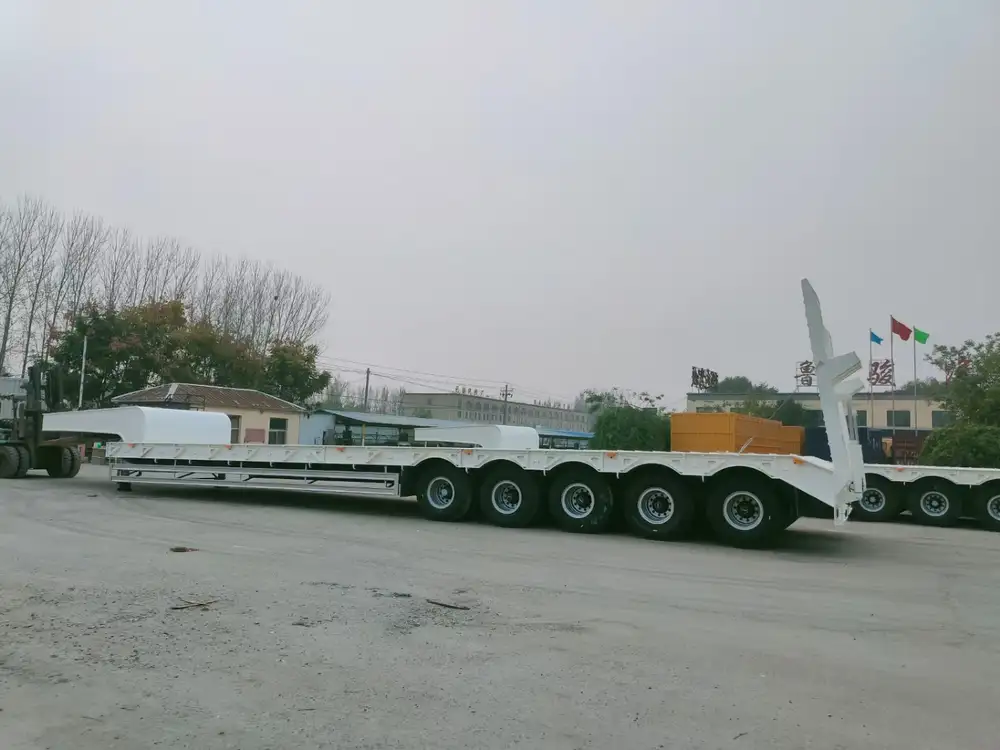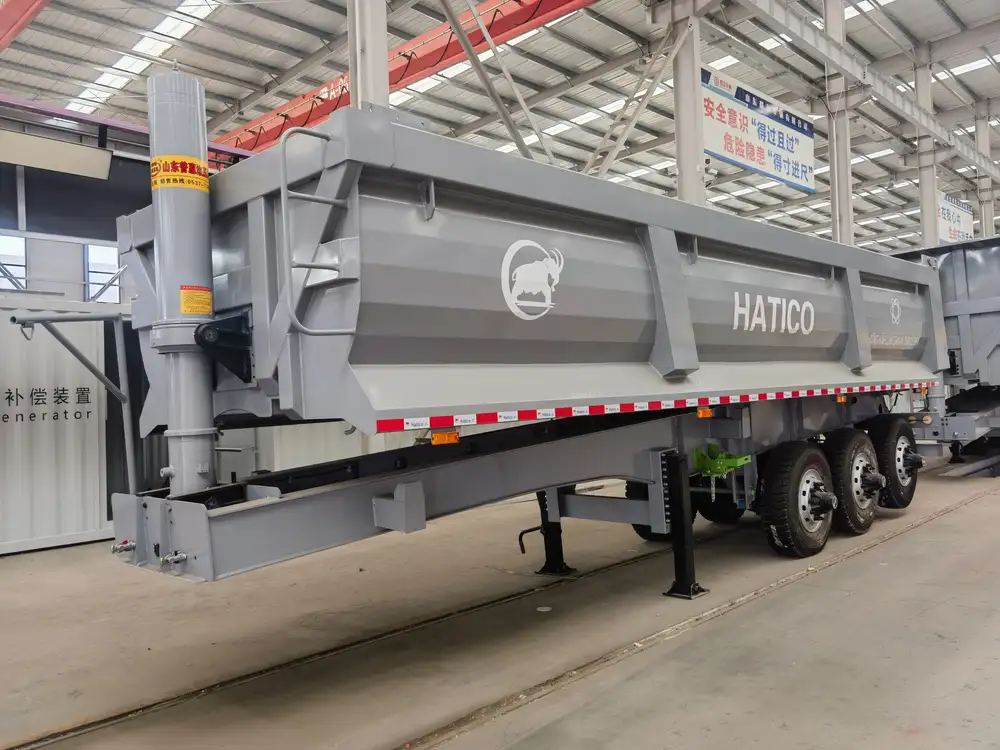When it comes to construction, landscaping, or any hauling needs, understanding the dimensions and specifications of a 10-yard dump trailer is crucial. The measurement of “10 yards” refers to the volume of materials that the trailer can transport comfortably. In this comprehensive guide, we will delve deep into what constitutes a 10-yard dump trailer, its physical dimensions, weight capabilities, and practical applications.
What is a 10 Yard Dump Trailer?
A 10-yard dump trailer is a versatile piece of equipment designed primarily for transporting loose materials such as dirt, gravel, mulch, and debris. Unlike standard trailers, dump trailers are engineered to lift and unload their contents effectively, thanks to their hydraulic lift systems. The size designation of “10 yard” typically implies that the trailer can hold approximately 10 cubic yards of material.
Dimensions and Specifications
Understanding the physical dimensions of a 10-yard dump trailer involves knowing not just its cubic capacity but also its length, width, height, and weight limits. Here, we present a standardized breakdown of typical measurements:
| Dimension | Measurement | Notes |
|---|---|---|
| Length | 12-14 feet | Standard for most 10-yard trailers |
| Width | 6-8 feet | Varies by manufacturer |
| Height | 2-4 feet | Base height without load |
| Capacity | 10 cubic yards | Approximate volume capacity |
| Weight Limit | 5,000 – 10,000 lbs | Depends on design and materials |

Calculating Capacity
Understanding how cubic yards translate to weight can help in practical applications. Consider the following estimates based on typical materials:
| Material | Weight per Cubic Yard (lbs) | Total Weight for 10 Yards (lbs) |
|---|---|---|
| Topsoil | 1,200 | 12,000 |
| Gravel | 1,500 | 15,000 |
| Sand | 1,600 | 16,000 |
| Mulch | 400 | 4,000 |
| Concrete, crushed | 2,400 | 24,000 |
Practical Applications of a 10 Yard Dump Trailer
The utility of a 10-yard dump trailer spans a variety of industries and applications. Here are some primary uses:
- Landscaping Projects: Ideal for transporting soil, mulch, and landscaping stones.
- Construction Sites: Essential for moving gravel, sand, and demolition debris.
- Home Renovations: Facilitates the disposal of waste materials, including concrete and bricks.
- Agricultural Use: Useful for transporting feed, fertilizers, or crop debris.
Weight and Towing Considerations
While knowing the size is important, understanding the weight limitations and towing requirements of a 10-yard dump trailer is equally crucial to ensure safety and compliance on the road.

Towing Capabilities
The towing vehicle must have adequate capabilities to handle the weight of a fully loaded trailer. Here’s a breakdown of common towing vehicles and their compatibility with a 10-yard dump trailer:
| Towing Vehicle | Recommended Tow Rating (lbs) | Notes |
|---|---|---|
| Half-Ton Pickup | 6,000 – 10,000 | Suitable for most 10-yard loads |
| Three-Quarter Ton Pickup | 10,000 – 14,000 | Best for full capacity loads |
| One-Ton Pickup | 12,000 – 16,000 | Ideal for heavy-duty tasks |
Benefits of Using a 10 Yard Dump Trailer
Increased Efficiency
By utilizing a 10-yard dump trailer, they can significantly reduce the number of trips required to transport materials. This efficiency not only saves time but also cuts down on fuel costs, making it a more economical choice for large projects.

Versatility
Due to its capacity, a 10-yard dump trailer can handle a variety of materials, allowing workers to switch tasks without needing to change equipment.
Ease of Use
The hydraulic lift mechanism allows for easy loading and unloading, reducing physical strain on the user and streamlining the workflow on job sites.
Maintenance Tips for Optimal Performance
To keep your 10-yard dump trailer in peak condition, regular maintenance is vital. Here are several key practices to adopt:

Regular Inspections
Conduct frequent checks of the following components:
- Tires: Inspect for wear and maintain proper inflation.
- Brakes: Ensure they’re functioning correctly.
- Hydraulic System: Look for leaks or any signs of malfunction.
- Frame & Body: Watch for rust, dents, and structural integrity.
Lubrication
Regularly lubricate pivot points, pins, and hinges to reduce friction and wear. Use high-quality grease that can withstand various weather conditions.
Clean the Trailer
Post-use cleaning is essential to prevent debris buildup that can lead to corrosion. This includes washing the bed and ensuring drainage holes are clear to prevent water accumulation.

Safety Considerations
When operating or working around a 10-yard dump trailer, safety should never be compromised. Here are several safety tips:
- Proper Attachment: Always ensure the trailer is securely attached to the towing vehicle before movement.
- Load Distribution: Ensure that materials are evenly distributed within the trailer to prevent swaying during transport.
- Weight Limit Compliance: Never exceed the manufacturer’s weight guidelines to avoid damage and ensure safe handling.
- Use of Personal Protective Equipment: Employees should wear appropriate PPE, including hard hats, gloves, and steel-toed boots when working with or around dump trailers.
Comparison with Other Sizes
While 10-yard dump trailers are popular, it’s essential to consider how they compare with other sizes, such as 6-yard, 12-yard, and 16-yard options. This not only helps customers choose the right trailer for their needs but also provides insights into efficiency versus capacity trade-offs.
| Trailer Size | Capacity (cubic yards) | Approx. Weight Limit (lbs) | Best Use |
|---|---|---|---|
| 6 Yard | 6 | 3,000 – 6,000 | Small renovations, yard cleanups |
| 10 Yard | 10 | 5,000 – 10,000 | Medium to large landscaping, debris |
| 12 Yard | 12 | 8,000 – 12,000 | Larger construction projects |
| 16 Yard | 16 | 12,000 – 16,000 | Heavy-duty commercial needs |
Conclusion
In conclusion, a 10-yard dump trailer serves as a powerhouse for a variety of transportation and dumping needs across multiple sectors. Its size, capacity, and versatility make it a favorable choice for anyone looking to transport bulk materials effectively while ensuring compliance with safety standards. By understanding its dimensions, weight limits, and best practices for maintenance, you can maximize its potential to enhance your workflow, minimize costs, and increase efficiency.
Understanding how to optimize the use of a 10-yard dump trailer can improve project outcomes. Whether you’re in construction, landscaping, or any other industry requiring material transport, investing in the right equipment tailored to your project’s needs is paramount.
By incorporating these insights into your operations, you ensure that you not only meet demand but do so in a manner that emphasizes safety, efficiency, and productivity. Always remember to assess your specific requirements before selecting the appropriate trailer size, and maintain your equipment to ensure years of reliable service.



